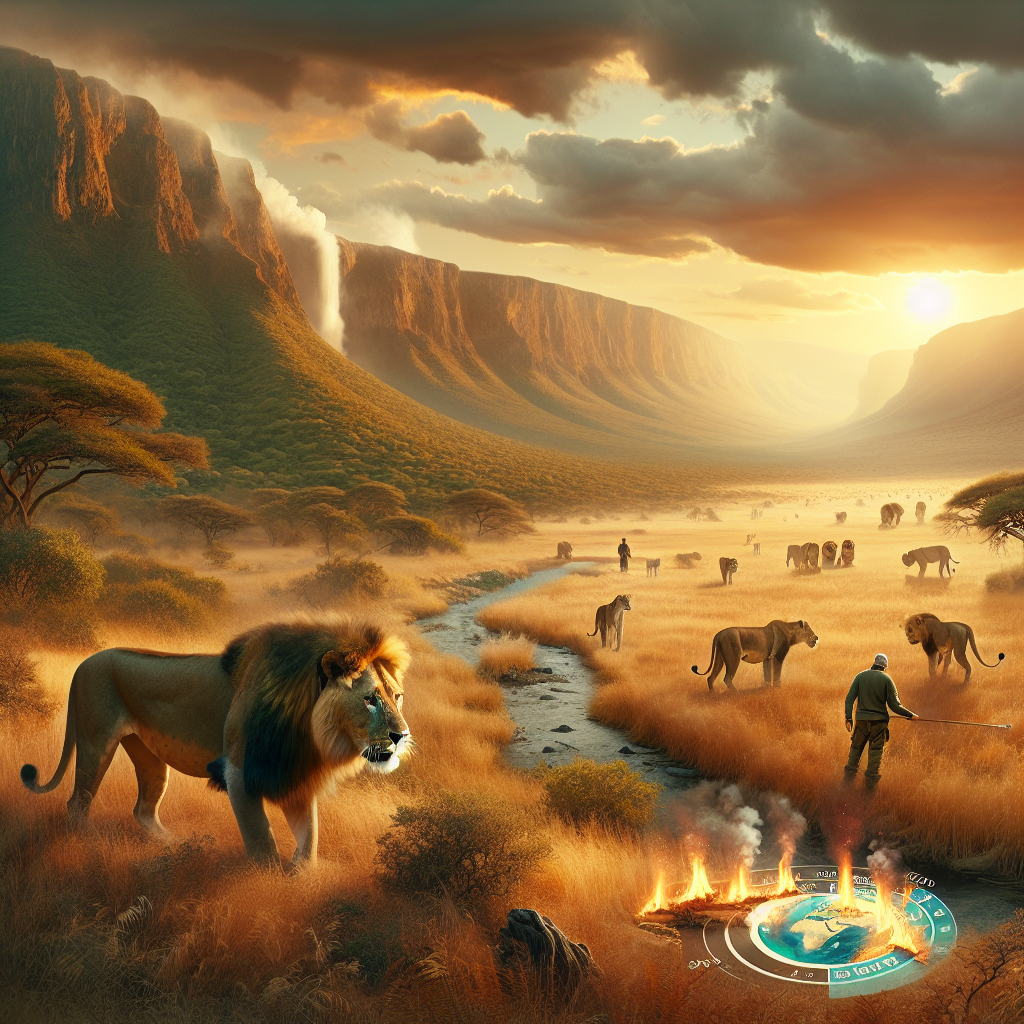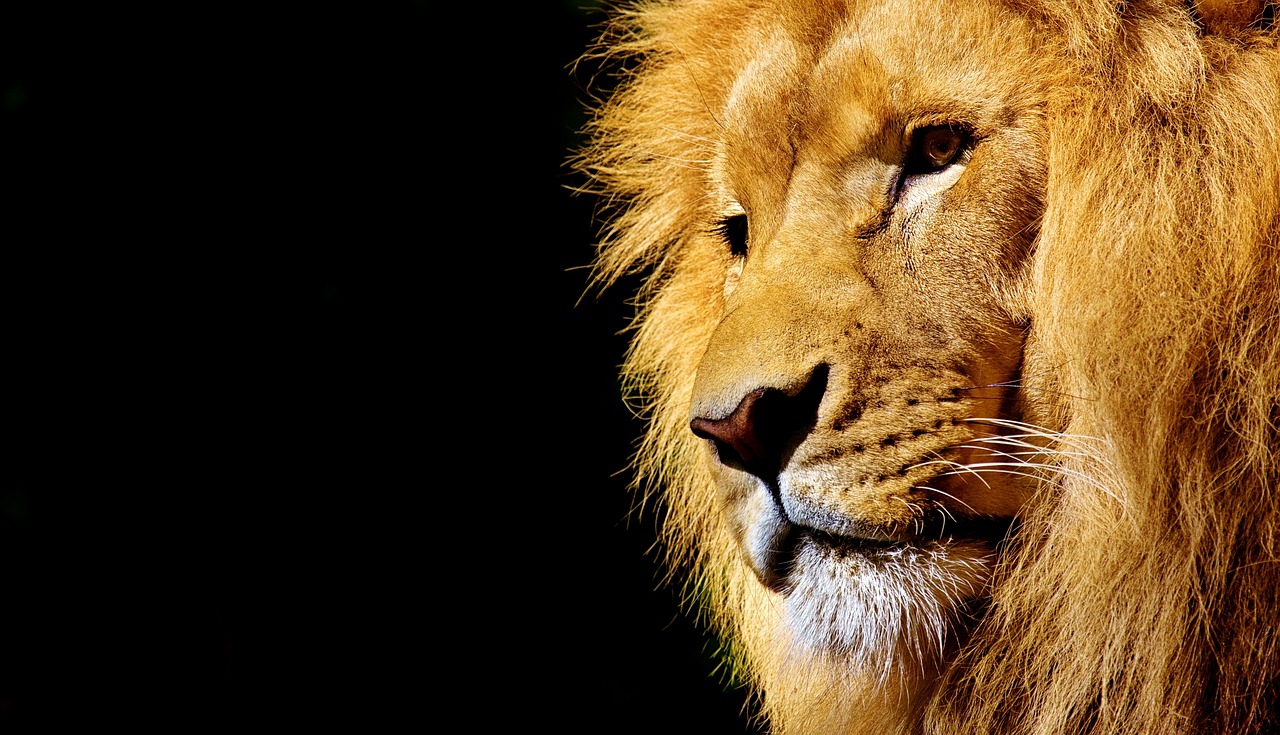When it comes to the conservation of lions, there is no doubt that climate change poses a significant challenge. As global temperatures continue to rise and extreme weather events become more frequent, the delicate balance of ecosystems that lions rely on for their survival is being disrupted. This article explores the impact of climate change on lions and highlights the urgent need for proactive conservation efforts to ensure the long-term survival of these majestic creatures in a rapidly changing world.
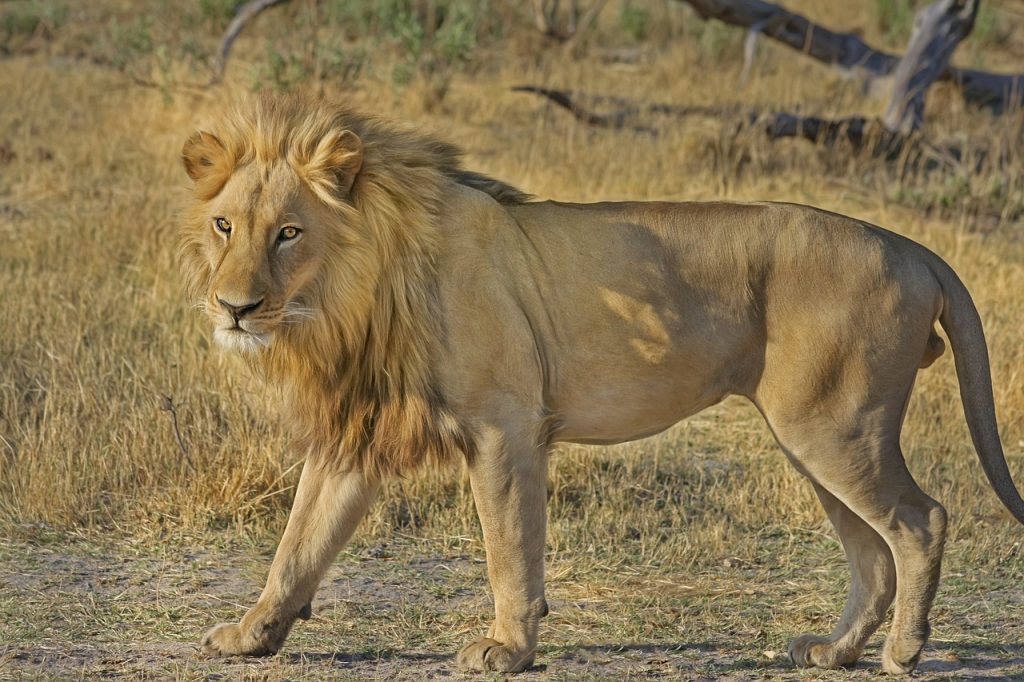
I. Habitat Destruction and Loss
A. Deforestation
Deforestation is a significant factor contributing to the destruction and loss of lion habitats. Forests are cleared to make way for agricultural activities, such as expanding croplands and livestock grazing. This deforestation not only removes vital habitat for lions but also disrupts the delicate balance of ecosystems. Without trees and vegetation, there is a loss of biodiversity, reduction in nutrient cycling, and increased soil erosion. This poses a serious threat to lions and other wildlife that rely on these habitats for survival.
B. Land Degradation
Land degradation, caused by unsustainable land use practices, further exacerbates the loss of lion habitats. Overgrazing, soil erosion, and desertification are all consequences of land degradation. As vegetation is depleted and ecosystems are disrupted, lions suffer from a decline in prey availability and reduced quality of their natural habitats. The degradation of land also leads to loss of biodiversity and negatively impacts the overall health and resilience of ecosystems, making it even more challenging for lions to thrive.
C. Fragmentation of Habitats
The fragmentation of habitats due to human activities is another critical issue affecting lion conservation. The rapid expansion of human settlements, construction of infrastructure, and creation of agricultural fields divide lion populations into isolated patches of habitat. This fragmentation hinders the free movement and genetic exchange between lion populations, increasing the risk of inbreeding and reducing their ability to adapt to changing environmental conditions. Moreover, fragmented habitats make lions more vulnerable to threats, such as poaching and human-wildlife conflicts.
II. Impact of Climate Change on Lions
A. Declining Prey Availability
Climate change brings about several challenges for lion conservation, one of which is the declining availability of prey. As changes in temperature and precipitation patterns occur, the abundance and distribution of herbivores, which are essential prey for lions, also change. Droughts and extreme weather events can lead to food shortages for both lions and their prey. This creates a serious imbalance in the predator-prey relationship, jeopardizing the survival of lions and disrupting the delicate ecosystem dynamics they depend on.
B. Altered Weather Patterns
Climate change disrupts weather patterns, resulting in increased unpredictability and intensity of weather events. Lions, like other wildlife, are adapted to specific climatic conditions and have finely tuned behaviors and physiological traits that enable them to cope within their natural habitat. However, with climate change, lions are faced with altered weather patterns, such as more frequent and severe droughts, floods, and heatwaves. These changes can have adverse effects on lion populations, leading to a decline in reproductive success, increased mortality, and a higher susceptibility to diseases.
C. Increased Human-Wildlife Conflicts
Climate change can also lead to increased human-wildlife conflicts, posing a significant threat to lion populations. As changing environmental conditions reduce the availability of resources for both humans and wildlife, competition for limited resources intensifies. This often leads to conflicts, as lions may prey on livestock or encroach on human settlements in search of food or water. Retaliatory killings by local communities are common, which further aggravates the conservation challenges faced by lions. Finding sustainable solutions for coexistence between lions and communities amidst the impacts of climate change is crucial for lion conservation efforts.
III. Conservation Efforts
A. Protected Areas and National Parks
Protected areas and national parks play a vital role in lion conservation. These designated areas provide essential habitats for lions and other wildlife species. By offering legal protection from habitat destruction, poaching, and human encroachment, protected areas and national parks ensure the preservation of crucial lion habitats. They provide secure spaces for lions to roam freely, maintain their natural behaviors, and interact within healthy ecosystems. Effective management and enforcement of protected areas are crucial to ensuring the long-term survival of lions.
B. Habitat Restoration and Management
Habitat restoration and management initiatives are essential for reversing the damages caused by deforestation, land degradation, and habitat fragmentation. By restoring degraded habitats, including reforestation efforts and implementing sustainable land use practices, it is possible to create healthier ecosystems for lions and other wildlife. Ecological monitoring and adaptive management strategies help ensure that habitat restoration efforts are successful in supporting lion populations.
C. Community-based Conservation
Involving local communities in lion conservation efforts is essential for long-term success. Community-based conservation programs empower local communities to become actively involved in protecting lion habitats and mitigating human-wildlife conflicts. Engaging communities in sustainable livelihood practices, such as alternative income sources and eco-tourism, not only reduces dependence on natural resources but also fosters a sense of ownership and responsibility towards conservation. By involving communities as stewards of their natural heritage, lion conservation efforts can be more effective and sustainable.
D. Translocation of Lions
Translocation, or the deliberate movement of lions from one area to another, can be a valuable tool in conserving lion populations. This conservation strategy aims to establish or strengthen new populations in areas where lions have become locally extinct or are at higher risk. Translocation can help increase genetic diversity, reduce the risk of inbreeding, and enhance the resilience of lion populations. However, careful planning, monitoring, and collaboration with local communities are crucial for the success of translocation programs.
E. Wildlife Corridors
Creating wildlife corridors is a critical approach to mitigate the negative impacts of habitat fragmentation. These corridors are pathways that connect fragmented habitats and enable the movement of lions and other wildlife between isolated patches of land. By maintaining connectivity, wildlife corridors promote gene flow, facilitate access to vital resources, and reduce the risk of genetic isolation. Establishing and conserving wildlife corridors are essential for supporting the long-term survival and adaptation of lion populations in the face of habitat fragmentation and climate change.
F. Climate-Smart Conservation Strategies
To address the impacts of climate change on lion conservation, it is crucial to adopt climate-smart conservation strategies. These strategies involve integrating climate change considerations into conservation planning and management. This may include prioritizing habitat restoration and protection in areas less vulnerable to climate change, implementing adaptive management strategies, and considering the resilience of landscapes and ecosystems. By incorporating climate change into conservation efforts, lion populations have a better chance of withstanding the challenges posed by a changing climate.
IV. Integrating Climate Change into Lion Conservation
A. Climate Change Research
To effectively integrate climate change into lion conservation, research is vital in understanding how lions and their habitats are affected by changing climatic conditions. Climate change research helps identify the specific impacts on lion populations, their prey, and their habitats. This knowledge enables conservationists to develop targeted strategies and management plans that consider the unique challenges lions face in a changing climate.
B. Adaptive Management
Adaptive management is an essential tool for addressing the uncertainties associated with climate change and lion conservation. This approach involves implementing management actions while continuously monitoring their effectiveness and adjusting strategies as new information becomes available. Through adaptive management, conservationists can learn from on-the-ground experiences and make informed decisions that improve the resilience and adaptive capacity of lion populations.
C. Collaboration and Partnerships
Addressing the complex challenges of climate change and lion conservation requires collaboration and partnerships among stakeholders. Governments, non-governmental organizations, local communities, and scientific institutions must work together to develop and implement effective conservation strategies. By pooling resources, expertise, and knowledge, collaboration can enhance the effectiveness of conservation actions, foster innovation, and promote shared responsibility for saving lions for future generations.
D. Education and Awareness
Education and awareness programs play a crucial role in mobilizing public support for lion conservation efforts and promoting behavior change. By raising awareness about the impacts of climate change on lion populations, educating communities about sustainable practices, and fostering a sense of pride and stewardship, these programs can inspire individuals to take action and contribute to conservation initiatives.
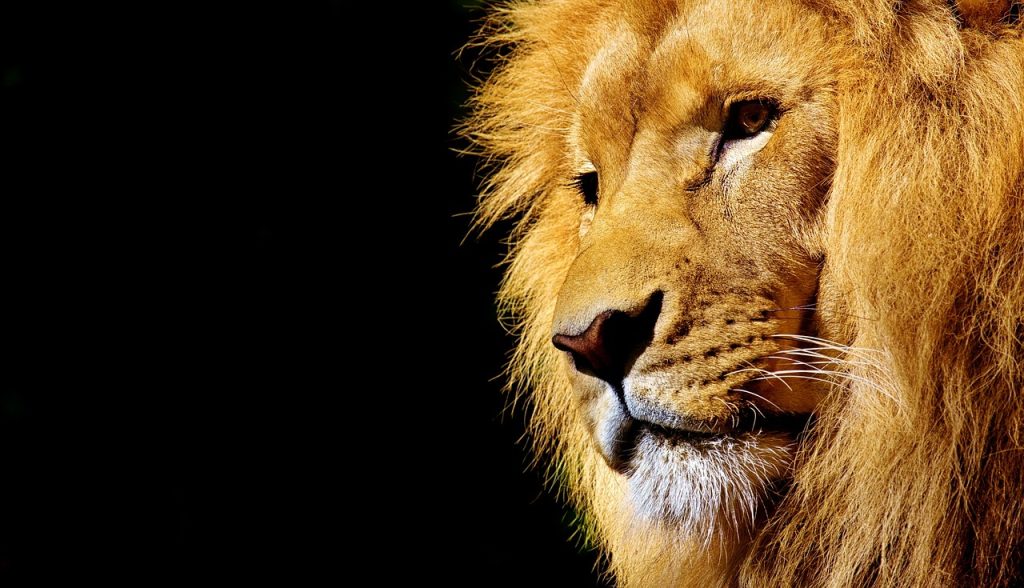
V. Policy and Advocacy
A. Strengthening Environmental Policies
Strong environmental policies and regulations are necessary to protect lion habitats and mitigate the impacts of climate change. Governments play a pivotal role in enacting and enforcing legislation that safeguards lion populations and their habitats. By incorporating climate change considerations into environmental policies, authorities can incentivize sustainable land use practices, promote habitat conservation, and combat habitat destruction and fragmentation.
B. Advocating for Lion Conservation
Advocacy efforts are vital in raising the profile of lion conservation and mobilizing public support. By advocating for the protection of lions and their habitats, individuals and organizations can drive positive change and influence policy decisions. Advocacy campaigns can raise awareness about the threats lions face, highlight successful conservation initiatives, and encourage individuals to take action through donations, volunteering, or supporting organizations working towards lion conservation.
C. International Agreements and Conventions
International agreements and conventions have a significant role to play in coordinating global efforts for lion conservation and climate change mitigation. Treaties, such as the Convention on Biological Diversity and the Paris Agreement, provide frameworks for countries to collaborate and take collective action. By ratifying and implementing these agreements, countries can commit to conserving lion populations, protecting habitats, and mitigating climate change. International cooperation is crucial to address the complex and transboundary challenges faced by lions and the environment.
VI. Sustainable Livelihoods for Local Communities
A. Alternative Income Sources
Providing local communities with sustainable alternative income sources is essential for reducing their reliance on activities that harm lion habitats. Supporting initiatives such as sustainable agriculture, agroforestry, handicrafts, and small-scale businesses can provide economic opportunities while minimizing the impact on lion habitats. By helping communities develop sustainable livelihoods, conservation efforts can create positive incentives for local communities to engage in, support, and advocate for lion conservation.
B. Eco-tourism
Eco-tourism offers a sustainable way for local communities to benefit from wildlife conservation. By promoting responsible and low-impact tourism practices, eco-tourism generates revenue that can directly contribute to lion conservation initiatives. Well-managed eco-tourism provides opportunities for visitors to experience lions and their habitats while respecting the surrounding environment and supporting local communities. It can help raise awareness, provide employment, and create economic incentives for the protection and preservation of lion populations.
C. Sustainable Agriculture and Livestock Practices
Promoting sustainable agriculture and livestock practices is essential for reducing the negative impacts of agriculture on lion habitats. Encouraging sustainable farming methods, such as agroecology and organic farming, minimizes the use of harmful agrochemicals and preserves soil fertility and biodiversity. Additionally, implementing measures to improve livestock management, such as rotational grazing and predator-friendly practices, can minimize conflicts between lions and local communities. By supporting sustainable agriculture and livestock practices, lion conservation can go hand in hand with sustainable land use.
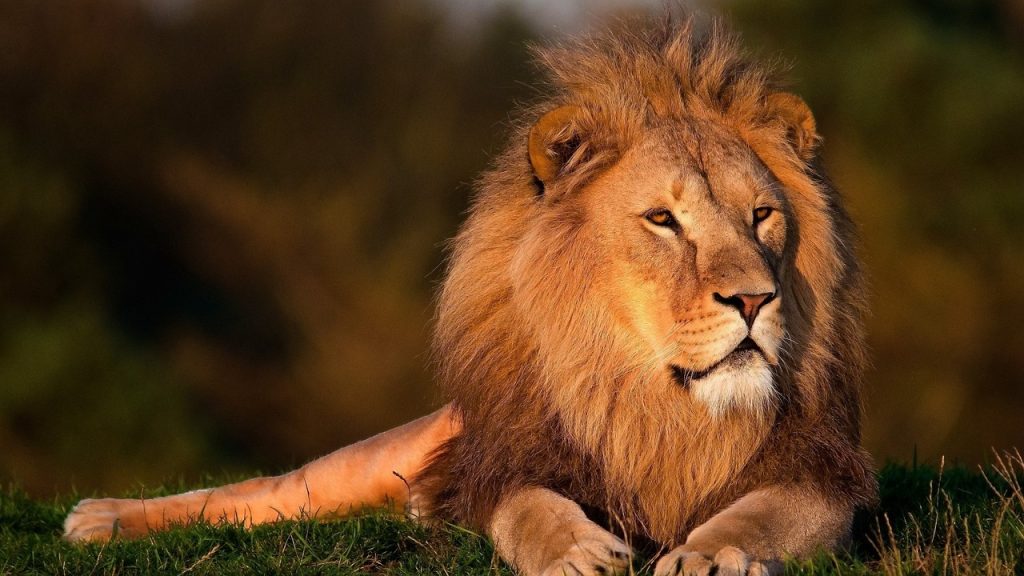
VII. The Role of Technology in Lion Conservation
A. Remote Sensing and Satellite Imagery
Remote sensing and satellite imagery provide valuable tools for monitoring and mapping lion habitats. These technologies enable researchers and conservationists to assess vegetation cover, detect changes in land use, and monitor habitat quality over large spatial scales. Remote sensing and satellite imagery also contribute to the identification of potential threats and opportunities for lion conservation, aiding in the development of targeted conservation strategies.
B. Wildlife Monitoring and Tracking
Technological advances in wildlife monitoring and tracking have revolutionized the understanding and management of lion populations. GPS collars and camera traps provide crucial data on lion behavior, movement patterns, population dynamics, and interactions with their environment. This data helps conservationists make informed decisions, such as identifying critical corridors, monitoring prey availability, and mitigating human-wildlife conflicts. By harnessing the power of technology, lion conservation efforts can be more precise, effective, and data-driven.
C. Geographic Information Systems (GIS)
Geographic Information Systems (GIS) play a significant role in spatial data analysis and decision-making for lion conservation. By integrating various data layers, such as habitat suitability, land use, and human-wildlife conflict zones, GIS allows researchers and managers to visualize complex relationships and patterns. GIS tools enable the identification of priority areas for conservation interventions, the assessment of landscape connectivity, and the modeling of future scenarios, integrating climate change impacts into planning and management strategies.
D. DNA Analysis and Conservation Genetics
DNA analysis and conservation genetics provide valuable insights into the genetic health and diversity of lion populations. Through non-invasive sampling and genetic analysis, researchers can assess genetic connectivity, identify distinct populations, and determine relatedness among individuals. This information helps guide translocation programs, manage captive breeding, and ensure the long-term viability of lion populations. Genetic monitoring also provides valuable data on the adaptive potential of lions in the face of climate change and assists in identifying management strategies to enhance genetic diversity.
VIII. International Collaboration and Funding
A. Government Support and Funding
Government support and funding are crucial for lion conservation, especially in developing countries where lion populations are found. Governments can allocate resources to protected areas, enforcement agencies, and research institutions to ensure effective conservation practices. By prioritizing lion conservation within national policies and budgets, governments can provide the necessary financial support, facilitate collaboration, and enable the implementation of conservation initiatives on a national scale.
B. Non-Governmental Organizations
Non-governmental organizations (NGOs) play a vital role in lion conservation, providing expertise, financial support, and community engagement. NGOs often work alongside governments, local communities, and other stakeholders to implement conservation programs, conduct research, and support policy advocacy. Through fundraising efforts, awareness campaigns, and on-the-ground initiatives, NGOs can make a significant impact on lion conservation by complementing government efforts and filling critical gaps in resources and expertise.
C. International Funding Mechanisms
International funding mechanisms, such as grants, foundations, and donor agencies, are essential for supporting lion conservation projects, especially in areas where financial resources are limited. Organizations dedicated to wildlife conservation, climate change, and sustainable development can provide funding for research, capacity-building, and community-based conservation projects. International funding mechanisms can help leverage resources, foster collaboration, and enable the implementation of larger-scale conservation initiatives.

IX. Case Studies: Successful Lion Conservation Projects
A. Maasai Mara Lion Conservation Program, Kenya
The Maasai Mara Lion Conservation Program in Kenya exemplifies a successful community-based conservation initiative. This program engages local Maasai communities in conserving lion populations by reducing human-carnivore conflicts through the establishment of predator-proof enclosures and employing community rangers to monitor and protect lions. By providing alternative income opportunities through eco-tourism, the program also enables communities to benefit from lion conservation. It serves as a model for combining conservation efforts with sustainable livelihoods and community empowerment.
B. Hwange Lion Conservation Project, Zimbabwe
The Hwange Lion Conservation Project in Zimbabwe focuses on safeguarding one of Africa’s most significant lion populations. Through partnerships between conservation organizations, local communities, and the government, the project employs a range of strategies, including translocation, monitoring, and habitat management. By engaging with communities and promoting sustainable land use practices, the project aims to reduce human-lion conflicts and foster coexistence. The Hwange Lion Conservation Project demonstrates the importance of collaboration and multidimensional approaches for lion conservation.
C. Serengeti Lion Project, Tanzania
The Serengeti Lion Project in Tanzania is a long-term research initiative that has contributed significantly to understanding lion behavior, population dynamics, and ecosystem interactions. Through extensive field research and monitoring, the project has uncovered valuable insights into the social structure, hunting behavior, and responses to anthropogenic impacts of Serengeti lions. The project has also played a crucial role in advocating for the protection and conservation of the Serengeti ecosystem, highlighting the need for landscape-scale conservation efforts to safeguard lion populations and their habitats.
X. Conclusion
Lion conservation in the age of climate change presents numerous challenges, but with proactive and innovative approaches, it is possible to secure a future for lions and their habitats. By addressing the drivers of habitat destruction and loss, understanding the impacts of climate change on lion populations, implementing conservation strategies, integrating climate change considerations, advocating for effective policies, promoting sustainable livelihoods, leveraging technology, fostering collaboration, and securing funding, the conservation community can work together to ensure the long-term survival of lions. Through these collective efforts, we can protect these majestic creatures and preserve the ecosystems they rely on, allowing future generations to witness the magnificence of lions in the wild.
